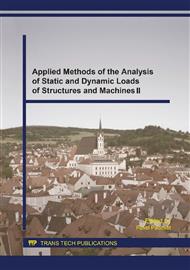p.320
p.324
p.328
p.332
p.336
p.340
p.344
p.348
p.352
Use of Open Source DIC Tools for Analysis of Multiple Cracking in Fiber-Reinforced Concrete
Abstract:
Digital image correlation (DIC) became indispensable when monitoring and analyzing adevelopment of displacement or strain fields. The method is capable of capturing strain localization, itis not limited to a relative measurement of discrete points as conventional methods and appears to bemore accurate than measurements by means of extensometers or strain-gauges that often suffer fromimperfect attachment to the measured surface. As open source DIC tools appear, the method becomesfeasible and the development is supported by the growing computational power of modern computers.The presented paper introduces open source 2D DIC tools and simple rules to follow when employingthe method. The presented case study on behavior of fiber reinforced high-performance concretedemonstrates a computational feasibility, accuracy and sensitivity of the method for a relatively lowfinancial cost.
Info:
Periodical:
Pages:
336-339
Citation:
Online since:
February 2016
Authors:
Keywords:
Price:
Сopyright:
© 2016 Trans Tech Publications Ltd. All Rights Reserved
Share:
Citation:


